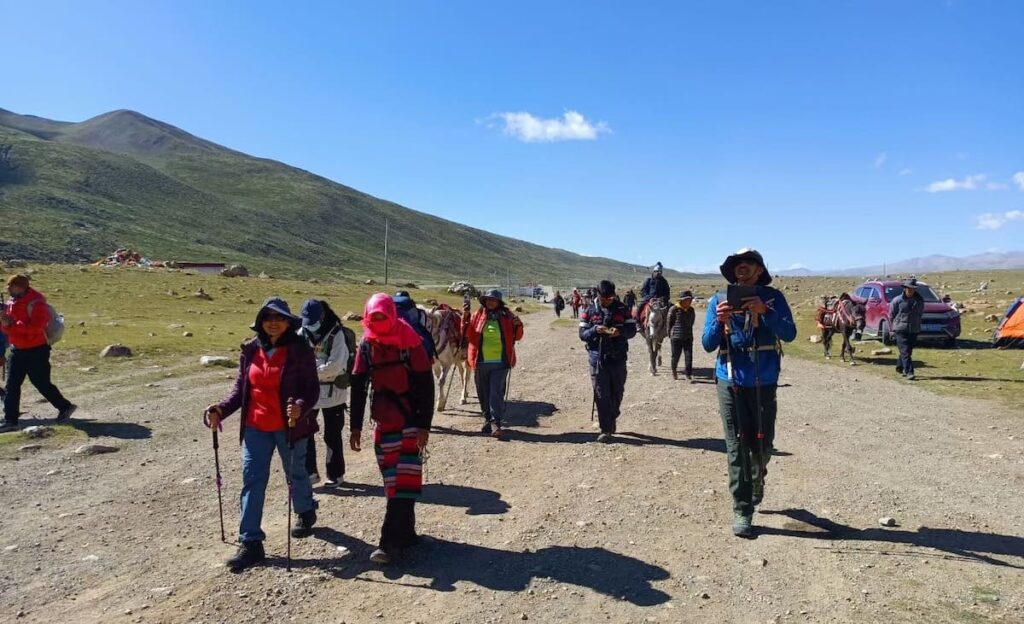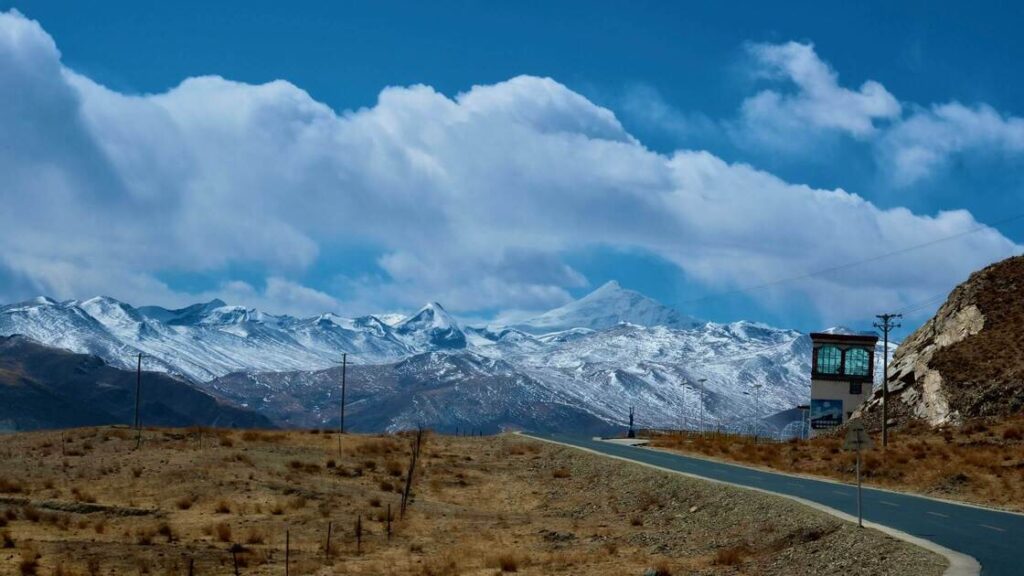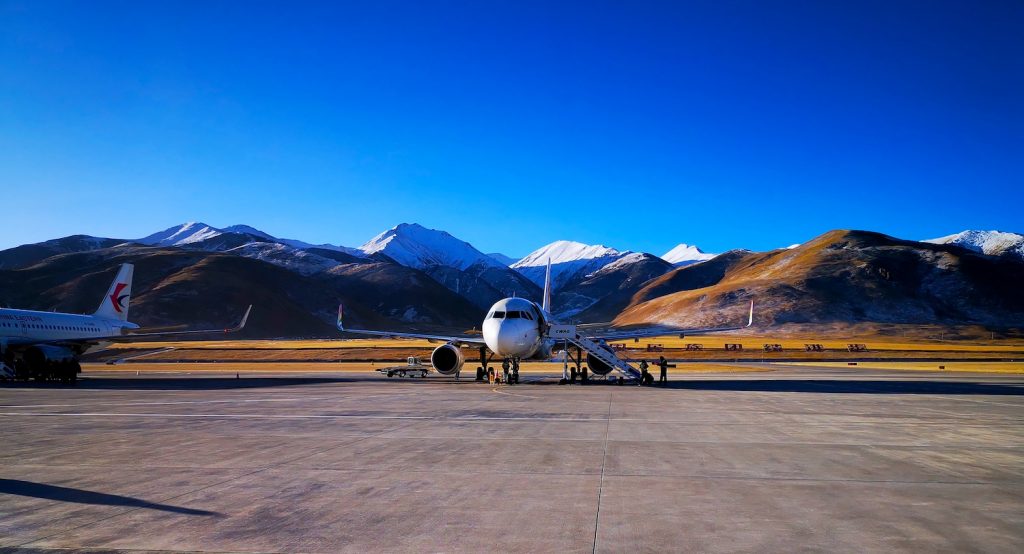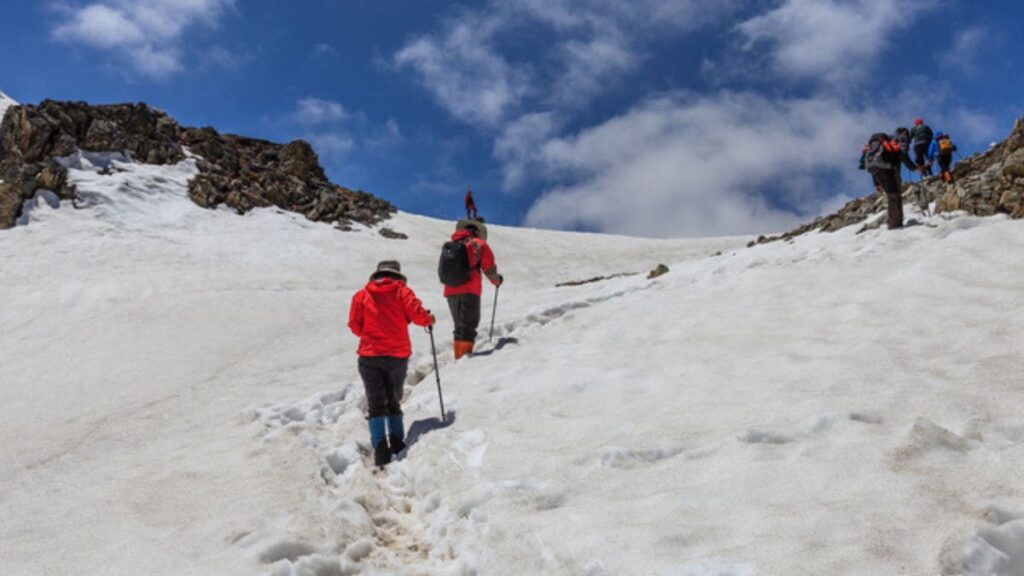Embarking on a journey to Tibet, the mystical land nestled amidst the Himalayas, is a dream for many adventurers seeking to explore its breathtaking landscapes and immerse themselves in its rich cultural heritage. However, planning a trip to Tibet can seem daunting due to its unique geographical and political considerations. Fear not! In this guide, we’ll walk you through the essential steps to book your Tibet tour with ease and confidence.

Step 1: Choose a Reputable Tour Operator
Tibet’s unique geographical and political landscape necessitates careful consideration when choosing a tour operator. Here’s what to look for:
1. Experience and Expertise: Opt for Tibet tour operators with a proven track record of organizing trips to Tibet. Look for companies with extensive experience in navigating the region’s regulations, logistics, and cultural nuances. Seasoned operators are better equipped to handle any challenges that may arise during your journey.
2. Reputation and Reviews: Research the reputation of tour operators by reading reviews and testimonials from previous travelers. Reliable platforms such as TripAdvisor, Google Reviews, and travel forums provide valuable insights into the quality of service, customer satisfaction, and overall experience offered by tour operators.
3. Licensing and Accreditation: Ensure that the tour operator is licensed and accredited by the relevant authorities, such as the Tibet Tourism Bureau (TTB) and China National Tourism Administration (CNTA). Licensed operators adhere to strict guidelines and standards, ensuring the safety, comfort, and satisfaction of their clients.
4. Variety of Itineraries: Choose a tour operator that offers a diverse range of itineraries catering to different interests, preferences, and travel styles. Whether you’re interested in cultural sightseeing, trekking, photography tours, or spiritual journeys, select an operator who can tailor the itinerary to meet your specific needs.

5. Transparent Pricing and Inclusions: Look for tour operators that provide clear and transparent pricing, detailing the cost of the tour package and any additional fees or expenses. Ensure that the package includes essential services such as transportation, accommodation, permits, and the services of an experienced guide. Beware of hidden costs and opt for operators that offer comprehensive, all-inclusive packages.
6. Responsive Customer Service: Choose a tour operator that provides responsive and personalized customer service throughout the booking process. Whether you have questions about the itinerary, permits, or logistics, a reputable operator should be readily available to address your concerns and provide timely assistance.
7. Flexibility and Customization: Opt for tour operators that offer flexibility and customization options, allowing you to tailor the itinerary according to your preferences, interests, and budget. Whether you’re traveling solo, with family or friends, or as part of a group, choose an operator that can accommodate your unique needs and requirements.
By carefully considering these factors and conducting thorough research, you can select a reputable tour operator who will ensure a memorable and enriching experience during your journey to Tibet. Remember that choosing the right operator is the first step towards a successful and fulfilling adventure in the Land of Snows.
Step 2: Decide on Your Itinerary
Tibet is a vast and diverse region with a wealth of attractions, each offering unique experiences and insights into its rich cultural and natural heritage. When planning your Tibet tour itinerary, consider the following factors:
1. Duration of Your Tour: Determine how much time you have available for your Tibet tour. Whether you have a few days or several weeks, there are itineraries to suit every timeframe. Keep in mind that traveling to Tibet often requires acclimatization to the high altitude, so consider adding extra days to your itinerary for this purpose.
2. Destinations to Visit: Tibet is home to a multitude of fascinating destinations, including the capital city of Lhasa, the sacred Mount Kailash, the Everest Base Camp, and the mystical Lake Namtso, among others. Research each destination to determine which ones align with your interests and priorities. Consider whether you prefer cultural sightseeing, outdoor adventures, spiritual journeys, or a combination of these experiences.

3. Activities and Experiences: Think about the activities and experiences you’d like to include in your itinerary. Are you interested in exploring ancient monasteries and temples, trekking through scenic landscapes, attending traditional festivals, or engaging in spiritual practices such as meditation and yoga? Tailor your itinerary to incorporate activities that resonate with your interests and passions.
4. Accessibility and Logistics: Consider the logistics of traveling within Tibet, including transportation options, distances between destinations, and travel permits required for certain areas. Factor in travel time, altitude changes, and the availability of accommodations and amenities when planning your itinerary. Consult with your tour operator to ensure that your itinerary is feasible and well-balanced.
5. Seasonal Considerations: Take into account the season in which you plan to visit Tibet, as this can impact the availability of certain activities and the weather conditions. Spring and autumn are popular seasons for travel to Tibet, offering mild weather, blooming landscapes, and clear skies. Winter can be cold but less crowded, while summer brings warmer temperatures and occasional rain showers.
6. Cultural Events and Festivals: Check the calendar for cultural events and festivals taking place during your visit to Tibet. Attending festivals such as Losar (Tibetan New Year), Saga Dawa, and the Tashi Lhunpo Festival can provide unique insights into Tibetan culture, spirituality, and traditions. Incorporate these events into your itinerary for an enriching and memorable experience.
7. Budget Considerations: Determine your budget for the Tibet tour and prioritize your spending accordingly. Keep in mind that costs may vary depending on factors such as the duration of the tour, the destinations visited, the level of accommodation and transportation chosen, and any additional activities or experiences included in the itinerary. Work with your tour operator to create a budget-friendly itinerary that maximizes value without compromising on quality.

By carefully considering these factors and customizing your itinerary to align with your interests, preferences, and budget, you can create a Tibet tour experience that is tailored to your unique needs and desires. Whether you’re seeking cultural immersion, spiritual enlightenment, or outdoor adventures, Tibet offers a wealth of opportunities for exploration and discovery.
Step 3: Obtain the Necessary Permits
Traveling to Tibet requires obtaining several permits issued by the Chinese government, including the Tibet Tourism Bureau (TTB) permit and, in some cases, the Alien Travel Permit (ATP) and Military Permit for certain restricted areas. Here’s what you need to know about obtaining these permits:
1. Tibet Tourism Bureau (TTB) Permit: The TTB permit, also known as the Tibet Entry Permit or Tibet Visa, is the primary permit required for traveling to Tibet. This permit is issued by the Tibet Tourism Bureau and is mandatory for all foreign travelers visiting Tibet. To obtain the TTB permit, you must book a tour through a registered tour operator, as independent travel to Tibet is not permitted. Your tour operator will apply for the permit on your behalf, typically requiring a scanned copy of your passport and Chinese visa at least 15-20 days before your intended travel date. The TTB permit specifies the places you are allowed to visit in Tibet and is checked at various checkpoints throughout your journey.
2. Alien Travel Permit (ATP): In addition to the TTB permit, certain areas in Tibet, such as Everest Base Camp, Mount Kailash, and the eastern regions of Tibet, require an additional permit known as the Alien Travel Permit (ATP) or Border Area Permit. This permit is issued by the Public Security Bureau (PSB) and is necessary for visiting areas considered sensitive or border regions. Your tour operator will assist you in obtaining the ATP if your itinerary includes these restricted areas. Note that additional fees may apply for the ATP, and processing times may vary.
3. Military Permit: Some remote and restricted areas in Tibet, such as the Mount Kailash region and certain border regions, require a Military Permit in addition to the TTB permit and ATP. This permit is issued by the military authorities and is necessary for traveling to areas close to military installations or sensitive border areas. Your tour operator will advise you if a Military Permit is required for your itinerary and assist you in obtaining it.
4. Travel Restrictions: It’s essential to be aware of any travel restrictions or closures in Tibet, as certain areas may be temporarily off-limits to tourists due to political, environmental, or security reasons. Stay informed about current travel advisories and consult with your tour operator for updates on any restrictions or closures that may affect your itinerary.

5. Timing and Processing: Permit processing times can vary, so it’s crucial to apply for permits well in advance of your planned travel dates. Start the permit application process at least 15-20 days before your intended departure to allow sufficient time for processing and any necessary revisions. When applying for permits, be prepared to provide accurate personal information, including passport details, Chinese visa information, and travel itinerary.
By ensuring that you have the necessary permits in place before your trip, you can enjoy a smooth and hassle-free journey to Tibet, exploring its majestic landscapes, ancient monasteries, and cultural treasures with peace of mind. Work closely with your tour operator to facilitate the permit application process and address any questions or concerns you may have along the way. With the required permits in hand, you’ll be ready to embark on an unforgettable adventure to the Roof of the World.
Step 4: Arrange Transportation and Accommodation
Once you have obtained the necessary permits for your Tibet tour, the next step is to arrange transportation and accommodation for your journey. Here’s what you need to consider:
1. Transportation Options: Depending on your itinerary and preferences, there are several transportation options available for traveling within Tibet:
• Flight: If you’re traveling long distances within Tibet or from major cities like Chengdu or Beijing, taking a flight may be the most efficient option. Lhasa Gonggar Airport is the main airport in Tibet, offering domestic flights to major cities in China such as Beijing, Shanghai, Chengdu, and Xi’an, as well as flights to other cities within Tibet.
• Train: The Qinghai-Tibet Railway, also known as the “Sky Train,” is an iconic rail journey that connects Tibet with mainland China. The train journey offers breathtaking views of the Tibetan Plateau and passes through high mountain passes, scenic valleys, and picturesque landscapes. Trains depart from cities such as Beijing, Shanghai, Chengdu, and Xining, with Lhasa as the final destination.

• Overland Travel: For travelers seeking a more adventurous experience, overland travel by bus or private vehicle is an option for exploring Tibet. This mode of transportation allows you to enjoy the scenic landscapes and make stops at various attractions along the way. However, keep in mind that traveling overland in Tibet may involve long hours on rough roads and high-altitude passes.
2. Accommodation Options: Tibet offers a range of accommodation options to suit every budget and travel style:
• Hotels: Lhasa, Shigatse, and other major cities in Tibet offer a variety of hotels ranging from budget guesthouses to luxury resorts. Look for accommodations that are centrally located, comfortable, and equipped with modern amenities such as Wi-Fi, hot water, and heating during the colder months.
• Guesthouses: For a more authentic experience, consider staying in traditional Tibetan guesthouses or family-run homestays. These accommodations offer an opportunity to interact with local hosts, experience Tibetan hospitality, and immerse yourself in the local culture and way of life.

• Tented Camps: In remote areas such as Everest Base Camp and Mount Kailash, tented camps provide basic accommodation for trekkers and adventure seekers. These camps offer a unique opportunity to sleep under the stars and wake up to stunning mountain vistas.
3. Booking and Reservations: Once you’ve decided on your transportation and accommodation preferences, it’s essential to make reservations in advance, especially during the peak travel seasons of spring and autumn. Contact your tour operator to arrange transportation tickets, hotel bookings, and any other necessary reservations for your Tibet tour. Be sure to confirm all bookings and double-check the details to avoid any last-minute surprises.
4. Travel Insurance: Consider purchasing travel insurance that covers medical emergencies, trip cancellations, and other unforeseen events during your Tibet tour. Travel insurance provides peace of mind and financial protection in case of emergencies or disruptions to your travel plans.
By arranging transportation and accommodation in advance and ensuring that all bookings are confirmed, you can enjoy a seamless and comfortable journey through the stunning landscapes and cultural wonders of Tibet. Work closely with your tour operator to customize your travel arrangements to suit your preferences and budget, and embark on an unforgettable adventure to the Roof of the World.
Step 5: Pack Wisely and Prepare for Altitude
Preparing for the high altitude and variable weather conditions of Tibet is essential for a safe and enjoyable journey. Here’s what you need to consider when packing for your Tibet tour:
1. Clothing: Pack clothing suitable for layering to accommodate the fluctuating temperatures and weather conditions in Tibet. Include items such as thermal base layers, fleece jackets, waterproof outer layers, sturdy hiking boots, warm hats, gloves, and scarves. Additionally, bring comfortable clothing for indoor activities and evenings in hotels.
2. Sun Protection: The high altitude of Tibet means increased exposure to ultraviolet (UV) radiation, so sun protection is crucial. Pack sunscreen with a high SPF, lip balm with UV protection, sunglasses with UV protection, and a wide-brimmed hat or cap to shield your face from the sun.
3. Medications: If you’re prone to altitude sickness or have any existing medical conditions, consult with your healthcare provider before traveling to Tibet. Consider bringing medications for altitude sickness, headaches, stomach upset, and any other health issues you may encounter during your journey. It’s also a good idea to pack a basic first-aid kit with bandages, antiseptic ointment, and pain relievers.
4. Hydration: Staying hydrated is essential for combating the effects of altitude sickness and maintaining overall health and well-being in Tibet. Pack a refillable water bottle and drink plenty of fluids throughout your journey. Avoid alcohol and caffeinated beverages, as they can contribute to dehydration at high altitudes.

5. Acclimatization: Allow time for acclimatization to the high altitude of Tibet to minimize the risk of altitude sickness. Take it easy upon arrival, avoid strenuous activity, and listen to your body’s cues. If you experience symptoms of altitude sickness such as headache, dizziness, nausea, or fatigue, descend to a lower altitude and seek medical attention if necessary.
6. Portable Oxygen: Consider bringing a portable oxygen canister or concentrator to alleviate symptoms of altitude sickness and provide relief in case of emergencies. Consult with your tour operator or healthcare provider to determine if portable oxygen is necessary for your trip.
7. Travel Documents: Ensure that you have all necessary travel documents, including your passport, Tibet Travel Permit (TTB permit), Chinese visa, and any other permits required for your itinerary. Keep these documents in a secure and easily accessible location throughout your journey.
8. Camera and Electronics: Capture memories of your Tibet tour with a camera or smartphone equipped with a high-quality camera. Bring extra memory cards, batteries, and charging cables to ensure that you don’t miss any photo opportunities. Additionally, consider bringing a portable power bank to recharge your electronics while on the go.
By packing wisely and preparing for the altitude and weather conditions of Tibet, you can ensure a safe, comfortable, and enjoyable journey to the Roof of the World. Remember to listen to your body, take precautions to prevent altitude sickness, and savor every moment of your adventure amidst the stunning landscapes and rich cultural heritage of Tibet.
Step 6: Immerse Yourself in Tibetan Culture
As you embark on your Tibet tour, embrace the opportunity to immerse yourself in the region’s rich cultural heritage and spiritual traditions. Engage with local communities, visit ancient monasteries and temples, and partake in cultural festivals and rituals. Be respectful of local customs and traditions, and approach your journey with an open mind and heart.

Step 7: Capture Memories and Embrace the Journey
Finally, remember to capture memories of your Tibet tour through photographs, journaling, and storytelling. Cherish the moments spent amidst the awe-inspiring landscapes, the warmth of Tibetan hospitality, and the profound spirituality that permeates the air. Embrace the journey with gratitude and reverence, knowing that your adventures in Tibet will leave an indelible mark on your soul.
Booking a tour to Tibet may require careful planning and coordination, but the rewards of exploring this enchanting land are immeasurable. With the right tour operator, a well-crafted itinerary, and a spirit of adventure, you’ll embark on a journey of a lifetime to the Roof of the World.

[…] Planning a trip to Tibet involves numerous logistical considerations, from transportation and accommodation to permits and itinerary planning. Group tours streamline this process, taking care of all the details so you can focus on enjoying the journey. From airport transfers and hotel bookings to arranging permits and coordinating activities, group tour operators handle the logistics with efficiency and professionalism, ensuring a seamless and hassle-free experience for participants. […]
[…] making it easy to access Tibet from various parts of China. Alternatively, travelers can take the Qinghai-Tibet Railway, which offers a scenic journey through the Tibetan plateau from cities such as Xining, Lanzhou, and […]